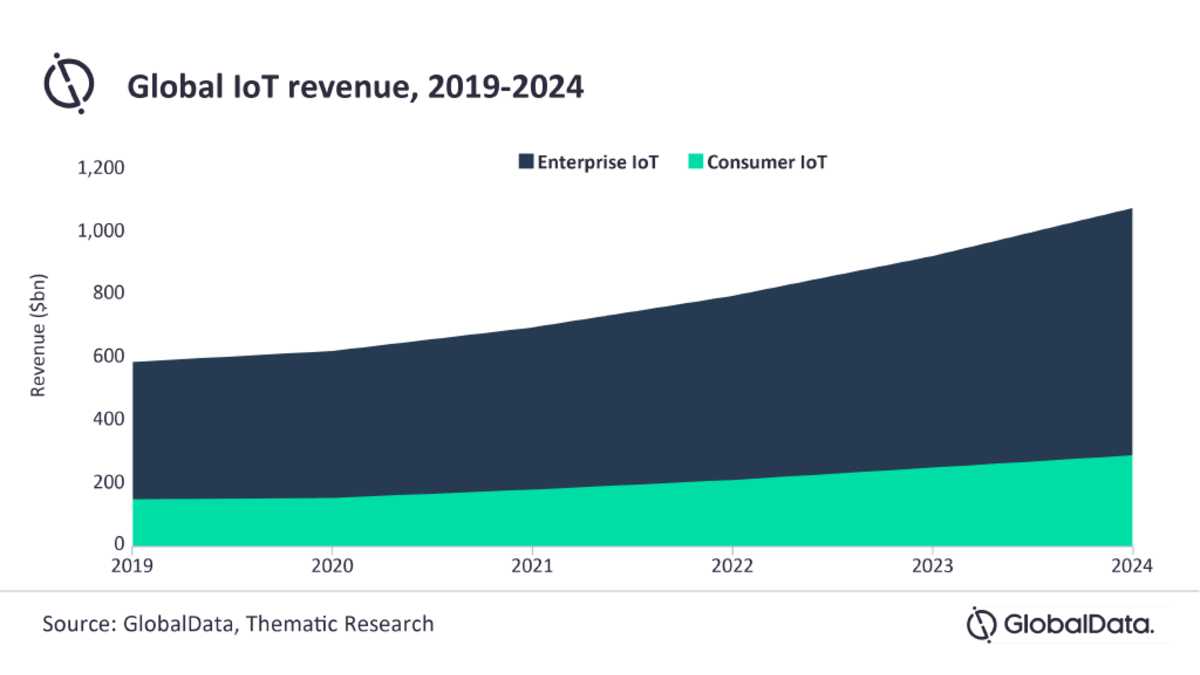 Latin America. GlobalData's latest report, "Thematic Research: Internet of Things," explains how a new wave of digital transformation augmented by COVID-19 will drive further growth across IoT markets.
Latin America. GlobalData's latest report, "Thematic Research: Internet of Things," explains how a new wave of digital transformation augmented by COVID-19 will drive further growth across IoT markets.
The global IoT market was worth $622 billion in 2020, up from $586 billion in 2019, and will grow to reach $1.077 billion by 2024, with a compound annual growth rate (CAGR) of 13% over the period, according to GlobalData forecasts. Enterprise IoT dominates the global IoT market, generating 76% of total revenue in 2020.
This dominance of enterprise IoT will continue for the foreseeable future. GlobalData expects this segment to still occupy 73% of the global IoT market by 2024.
Jasaswini Biswal, Associate Director of Thematic Research Projects at GlobalData, commented: "The ongoing COVID-19 pandemic has highlighted the crucial role ioT has come to play in our lives. Several IoT use cases saw increasing adoption during the pandemic, including the use of connected thermal cameras to detect potential COVID-19 infections and sensors to monitor office occupancy levels.
"The demand for technologies that can help the workforce return to work safely is increasing and will likely continue to grow. IoT applications, such as contact tracing devices and wearable health monitoring devices, provide critical data to help fight the pandemic."
These new use cases have created a positive attitude towards IoT as a critical enabler of the future. According to Globaldata's "*Emerging Technology Trends Survey 2020," approximately 48% of respondents showed positive sentiment towards IoT, and 45% believed That IoT would play a pivotal role in the new business generation over the next three years.
Biswal continues, "The next phase of IoT has the potential to transform the way we live and work. As IoT penetration spreads to the point of being ubiquitous, entirely new business models will emerge. IoT networks will even do business with each other, providing services resulting from autonomous or near-autonomous collaboration.
"However, today's IoT systems lack three critical features: First, unstructured and fragmented security regulations are major obstacles to wider IoT adoption: whether in consumer or enterprise IoT.
"Secondly, there is no global IoT communication standard. The global IoT market can only take off once all connected devices speak the same language. Third, along with this lack of standardization, today's IoT ecosystems lack real-time intelligence, which relies heavily on edge computing and artificial intelligence of things (AIoT). For IoT to be widespread, these three shortcomings need to be addressed."















